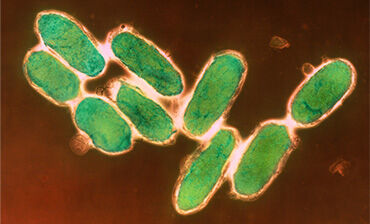Plague

Plague is a disease caused by bacteria. Over the past several hundred years, there have been three pandemics with high mortality rates. It has been absent from Europe for more than 50 years but continues to affect the Americas, Africa and Asia.
Infection starts with flu-like symptoms, but can later develop into different clinical forms:
- Bubonic plague: The most common form of plague, where symptoms appear 2 to 6 days after infection and include swollen glands on the skin, inside the mouth and near the groin. If untreated, the mortality rate is between 40% and 70%.
- Primary pneumonic plague: Symptoms appear 1 to 3 days after infection, with chest pain, production of thick mucus in the lungs, respiratory distress and death within 24 hours.
- Septicaemic plague: Symptoms appear 2 to 6 days after infection and are a blood infection that leads to infection of other organs. Without antibiotics, this disease is almost always fatal.
People at the highest risk are those in contact with wild rodents and fleas in plague-affected areas, and travellers in high-risk areas.
Plague is mainly found in rodents. The transmission between rodents and humans is usually via fleas. Although human-to-human transmission is rare in the case of bubonic plague, in cases of pneumonic plague it occurs after inhalation of infectious droplets from infected persons.
There is no vaccine available against plague, but antibiotics are used to treat it.
In the case of pneumonic plague, patients should be isolated and their contacts traced and treated.
The main control measures are to reduce contact with wild rodents and their fleas and to establish surveillance and control programmes in risk areas.




